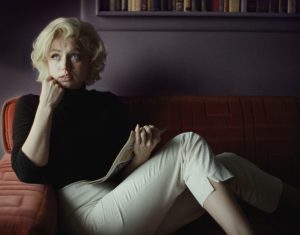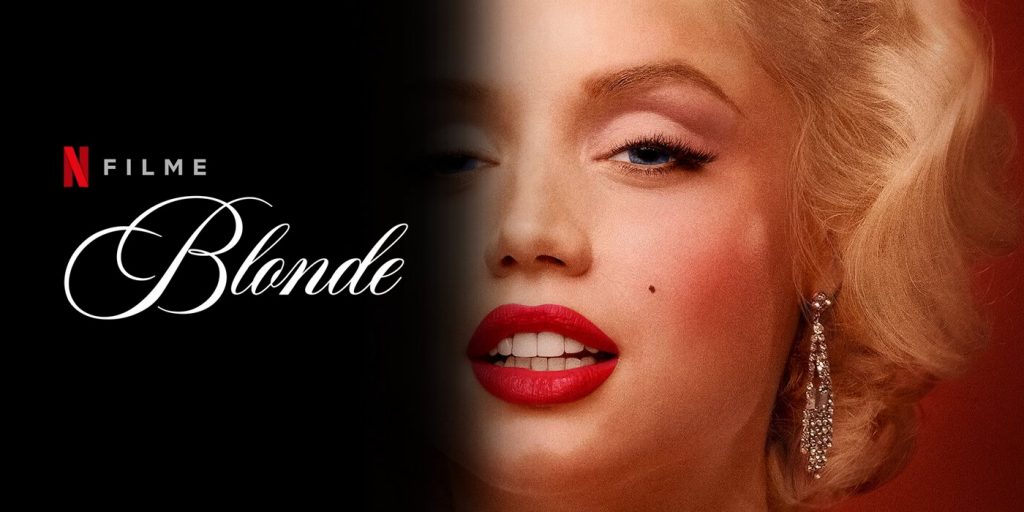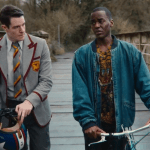‘Blonde’ is a Beautiful Fever Dream That Needs to Break
What can you say about a film that is part Terrence Malick’s waking dream, part hallucinatory Tennessee Williams’ southern gothic romance and part Baby Doll?
No really, what?
Trigger Warning: This review of Blonde talks about rape and abuse.
Blonde is a new film about the phenomenon that was Norma Jean Baker aka Marilyn Monroe. The film was directed and written for the screen by Andrew Dominick and is based on the novel Blonde by Joyce Carol Oats. The film stars Ana de Armas, Adrien Brody, Bobby Cannavale, and more.
First and foremost, this is not a biopic. Blonde could be called a spiritual reimagining, an ode, even a ballad to the unknown Norma Jean, but there’s too much unknown for it to hold any semblance of actually being about Marilyn.
We meet Norma Jean as a child where her schizophrenic mother drives her into the fires of the Hollywood Hills to go see her “father”. This is a man in a photo who Gladys (Julianne Nicholson) has told Norma Jean constantly was her father who was too busy to come and visit. During an episode, Gladys abuses Norma Jean and she seeks refuge at the neighbors until they take her to an orphanage where Norma Jean insists she’s not an orphan.
Then we make a hard cut to Norma Jean getting raped in an office and becoming a movie star.

There’s little here that works, but the film has created so many things that don’t work, that they only seem to work together. You could put this film on the life of any blonde actress of the day and it would work. Let it be Grace Kelly and instead of JFK it’s Clark Gable. Maybe it’s Mamie van Doren or Lana Turner? The point is any of them could fit because this story is not about Marilyn.
That could be the point, but I don’t think it is. Oats has always been clear that the book is a piece of fiction and Dominick mimics this stance. But just like a B-movie in the ‘50s, Marilyn was the draw. So you take this story that reads like Sinclaire’s The Jungle… but Hollywood! or Forrest Gump for Bottle Blondes and you make it even more generic and then place it on top of a pawn. Unlike other more clever attempts, this isn’t feminist. It’s exploitative and reductive.
Visually the film is stunning. Through the use of black and white into color and shifting perspective, Dominick has created a sweeping and lovely film. Some of the transitions may be more stylistic than effective as metaphors but I’m willing to give a pass because it was just so thrilling to look at. The production was beautiful, but again, none of this was about Marilyn. If there were some method to the madness – it’s color when it’s Marilyn, it’s black and white when it’s Norma – but as it stands everything was done for style, for the look of it, to exist as a living reel of Dominick’s talents. None of it serves to show Marilyn as anything more than a victim.
Which is a bummer. Because it’s all beauty and no substance, the same has been implied about Marilyn Monroe herself. de Armas really does put her everything into the role. But she never fully disappears into being Marilyn. This is not her fault. The character itself is not Marilyn so you can’t blame de Armas for trying to make this paper doll a living, breathing three-dimensional model. de Armas does serve as a modern-day Isabella Rossellini. She has a way about her and it’s a little weird, a lot disarming, and utterly lovable. She can turn her eyes on and off like a switch and it’s amazing to see her hone her craft. She was remarkable in the role, but she was felled by an aimless script and a generic characterization of the famed star.

I want to talk about the JFK scene.
I get it. I really do. I get the idea of showing Marilyn at her worst. I understand the conceit of Norma creating Marilyn to cope and then having Marilyn overwhelm and overtake her. But again, when you have a movie as unspecified as this one that plants a fictionalized scene involving a very specific relationship, it means nothing. As our lead is fiercely escorted to the president’s suite, we see her breeze past Jackie who is crying on a couch. She goes into the president who is on the phone and keeps telling her to “not be shy” as she jacks him off. Then he grabs her head and forces her mouth on him and then we’re treated to two minutes of Marilyn with a shocked look in her eyes, fellating JFK’s cock in extreme close-up.
At best, it’s a hat on a hat. We got it when she was forced to have an abortion, we got it when Joe Dimaggio slapped her while she was topless and she immediately begged for forgiveness despite not knowing what she’d “done wrong”. We got it when her mom abused her and we got it when she was raped in the very first scene. At worst it’s an exploitative mess because what is the point? She’s still letting people take advantage of her? She’s still so desperate for love and strong male attention that she’d do anything? Again, we know.
There are also calls from someone who says he’s her dad? I can’t.
Blonde is a beautiful film that’s nearly three hours and shoots itself in the foot by exploiting the very figure they claim to be representing. The author and Dominick seem to be very proud that there’s no sentiment and this isn’t a feel-good story, and that’s fine. But it’s also not a Marilyn story.
Author: StickyKeys
Help support independent journalism. Subscribe to our Patreon.
Copyright © The Geekiary
Do not copy our content in whole to other websites. If you are reading this anywhere besides TheGeekiary.com, it has been stolen.Read our







